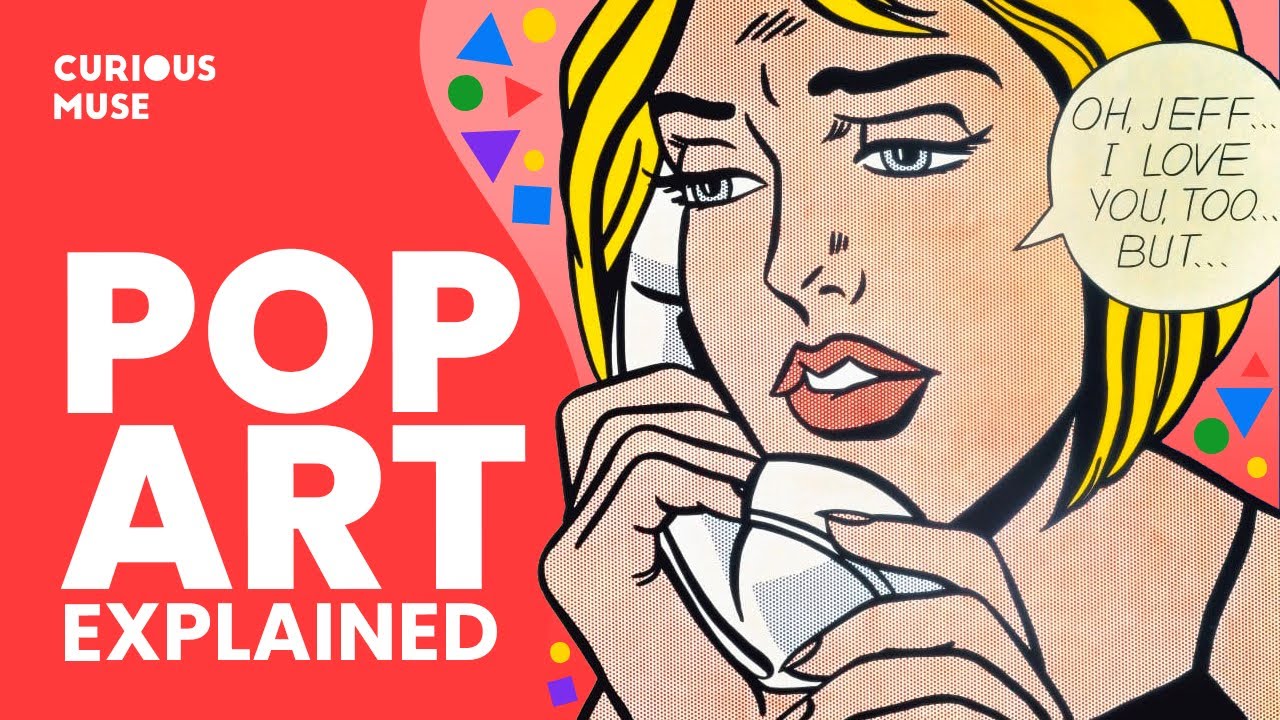What is Pop Art? | Tate Kids
Summary
TLDREllie introduces pop art, connecting everyday objects like bananas and comic books to the vibrant, youthful spirit of the movement. She explains that pop art is about mass-produced, popular culture, and highlights key artists like Andy Warhol, Roy Lichtenstein, and Pauline Boty. Pop art is bold, fun, and revolutionary, blending advertising, comics, and rebellion. It emerged not just in galleries but in public spaces, becoming a global phenomenon. Ellie questions the line between reality and artificiality, echoing Andy Warhol's perspective on pop art's enduring influence in modern media and culture.
Takeaways
- 🍌 Pop art is a way of life and a perspective on the world, not just an art movement.
- 🎨 Pop art is bold, youthful, and fun, drawing inspiration from popular culture.
- 🖼️ Pop art was a response to the 1950s consumerism, where people wanted glamour, excitement, and mass-produced goods.
- 👩🎤 Richard Hamilton defined pop art as low-cost, witty, glamorous, and mass-produced, often using images from magazines and advertisements.
- 🎥 Andy Warhol was a major figure in pop art, using production techniques like silk screening to create iconic works like his Marilyn portraits.
- 📚 Roy Lichtenstein drew inspiration from comic books and used Ben Day dots to give his work a distinctive comic-like appearance.
- 💥 Female artists like Pauline Boty brought a rebellious and fun edge to pop art, celebrating 'girl power.'
- 🧥 Nicola L created interactive pop art performances, using a giant red coat to engage people globally in her artwork.
- 🌍 Pop art was a global movement, with artists like Parviz Tanavoli in Iran and Jean-Michel Basquiat in New York bringing local and contemporary elements to the style.
- 📡 Pop art continues to influence modern media, blending the real and the artificial in spaces like TV, radio, and the internet.
Q & A
What are the four favorite things mentioned by Ellie in the transcript?
-Ellie's four favorite things are bananas, her red coat, tomato soup, and comic books.
What do all of Ellie's favorite things have in common?
-They all relate to pop art, which is described as young, bold, and fun.
How does Ellie define pop art in the transcript?
-Ellie defines pop art as more than just an art movement. It’s a lifestyle, a craze, and a way of looking at the world. Pop art is young, bold, fun, and reflects popular culture.
How did culture shift from the 1940s to the 1950s, according to the transcript?
-In the 1940s, life was described as 'a bit grey,' but in the 1950s, people wanted plastic, glamour, and to have a good time. They focused on buying and spending more, watching TV, listening to music, and becoming famous.
What is pop art short for, and how is it described?
-Pop art is short for 'popular art,' and it means art for everyone, reflecting mass culture and being accessible to the public.
Who is Richard Hamilton and what did he contribute to pop art?
-Richard Hamilton was a pop artist who described pop art as low-cost, young, witty, glamorous, and mass-produced. He was known for creating collages using imagery from glossy magazines, films, and advertising.
What is one of Andy Warhol's notable contributions to pop art?
-Andy Warhol is famous for his Marilyn portraits and his approach to art as a production line, similar to the mass production of Coca-Cola bottles or Campbell's Soup cans. He used bright colors and silk-screening techniques to create art on a large scale.
How did Roy Lichtenstein create his pop art, and what was unique about it?
-Roy Lichtenstein used Ben Day dots to make his artwork resemble comic books, especially the ones you would find in newspapers.
Who was Pauline Boty, and how did she contribute to pop art?
-Pauline Boty was an English painter who added fun and rebellion to pop art. She is considered a pioneer of 'girl power' in the movement, and one of her notable works is 'The Only Blonde in the World.'
How did pop art extend beyond traditional galleries?
-Pop art extended beyond galleries through performances and public engagement, such as Nicola L, who took a big red coat around the world, encouraging people to interact with her work. This made pop art accessible to everyday people, not just celebrities.
Who are some global pop artists mentioned, and how did they interpret pop art?
-In Iran, Parviz Tanavoli was a sculptor and painter who created art from everyday, discarded materials. In New York, Jean-Michel Basquiat blended pop art with hip-hop and street art influences.
Outlines

This section is available to paid users only. Please upgrade to access this part.
Upgrade NowMindmap

This section is available to paid users only. Please upgrade to access this part.
Upgrade NowKeywords

This section is available to paid users only. Please upgrade to access this part.
Upgrade NowHighlights

This section is available to paid users only. Please upgrade to access this part.
Upgrade NowTranscripts

This section is available to paid users only. Please upgrade to access this part.
Upgrade Now5.0 / 5 (0 votes)





